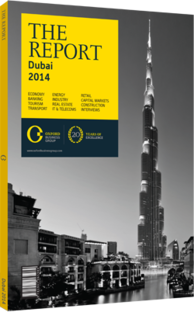Cool runnings: The use of district cooling to supply energy is becoming a priority
With 70% of electricity use in Dubai’s buildings committed to cooling, developing efficiencies in this market segment is a main focus of the emirate’s demand side management (DSM) strategy.
Building Capacity
District cooling service (DCS) companies provide centralised production and distribution services for cooling energy. Chilled water is delivered via an underground insulated pipeline from a district cooling plant to office, industrial and residential buildings, replacing individual air conditioning units with blanket coverage. Specially designed units in each building then use this water to lower the temperature of air passing through the building's air conditioning system.
Emirates Central Cooling System Corporation (Empower) is the Middle East’s largest district cooling provider. When the Dubai-based company was established in 2003, they had expected to build just three plants to service the Dubai International Finance Centre, Jumeirah Beach Residence and Dubai Healthcare City. However, the industry has since grown considerably, with market share split between Empower (in which the Dubai Electricity and Water Authority, DEWA, holds a 70% stake) and four other major district cooling companies, Emicool, Palm, Tabreed and Qatar Cooling. Using thermal energy storage (TES) systems to manage distribution at peak hours allowed Empower to save 320 MW in 2012, enough to power 65 buildings with more than 400,000 refrigeration tonnes (RT) of installed cooling capacity. The company anticipates savings of 350 MW of energy for the year ending 2013.
Facing Challenges
Most energy companies specialising in DCS suffered throughout the global recession and struggled to recoup large upfront costs in the face of delays in construction and low occupancy rates. Their current balance sheet performance now mirrors the construction upturn. In 2012, Empower increased its profits by 17% to $51.7m while the total number of buildings connected to its district cooling systems grew to 320. The company is continuing to undergo expansion, for instance awarding a contract worth Dh155m ($42.19m) to TransGulf Electro Mechanical in 2013 to construct its second district cooling plant in Business Bay.
Scheduled for completion in mid-2014, the plant will have a full capacity of 45,000 RT to meet the additional cooling requirements of 80 new buildings. It will also be the first district cooling plant in the region to be built in line with green building principles, and to follow the guidelines of treated sewage effluent and thermal energy storage. Palm Utilities, another Dubai district cooling company, saw a surge of 242% in net profit over the past three years to $44.6m. The company’s customers include Palm Jumeirah, Discovery Gardens, Jumeirah Lake Towers and Ibn Battuta Mall. Rates of return such as these have made it easier for them to be able to recoup capital costs and expand in a DCS market expected to grow to 30% penetration at the individual unit level, pending a series of anticipated regulatory adjustments. The resulting efficiencies are projected by the Dubai Carbon Centre of Excellence (DCCE) to save a total of up to 14% in energy consumption.
Finding Solutions
However, obstacles remain to the realisation of these goals. “A significant challenge is determining the right means of distributing the cost of utility related to district cooling in a fair manner, such that the savings are realised by all parties involved, which will further its adoption in the years to come,” Adib Moubadder, managing director of Emicool, told OBG. In particular, providers in the DCS market must develop innovative solution to share cost benefits with end users, the residents of serviced communities, through the targeted delivery of energy savings. Indeed, one implemented solution with significant potential is local district cooling companies working in conjunction with DEWA to introduce a sub-metering system that charges tenants for their usage, rather than as a fraction of aggregate usage.
You have reached the limit of premium articles you can view for free.
Choose from the options below to purchase print or digital editions of our Reports. You can also purchase a website subscription giving you unlimited access to all of our Reports online for 12 months.
If you have already purchased this Report or have a website subscription, please login to continue.

